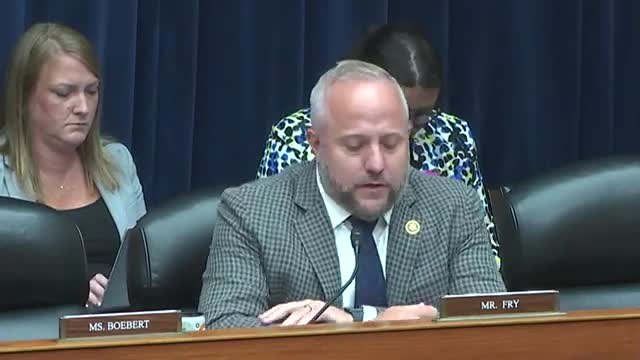California Faces Exodus as Cost of Living Soars
September 25, 2024 | Oversight and Reform: House Committee, Standing Committees - House & Senate, Congressional Hearings Compilation
This article was created by AI summarizing key points discussed. AI makes mistakes, so for full details and context, please refer to the video of the full meeting. Please report any errors so we can fix them. Report an error »

In a recent government meeting, discussions highlighted significant demographic shifts in the United States, particularly focusing on California's declining population. The Census Bureau reported that California is the leading state for out-migration in 2024, with a net loss of 10,453 residents. This trend has raised concerns among officials about the underlying causes driving residents away.
One key factor identified is the high cost of living in California, which has escalated dramatically over the decades. Historical data presented during the meeting indicated that in 1960, California's cost of living was approximately 5 to 10 percent higher than the national average. Today, that figure has surged to between 145 and 150 percent of the national average, making it about 45 percent more expensive to live in the state compared to the rest of the country.
Officials pointed to these economic pressures, alongside regulatory burdens imposed by the state's progressive government, as primary reasons for the exodus. In contrast, South Carolina has emerged as a destination for those leaving California, ranking second in population growth. The state's favorable climate and lifestyle were cited as attractive factors for new residents.
As the meeting concluded, the implications of these migration patterns were clear: states like South Carolina are benefiting from California's challenges, while the latter faces ongoing scrutiny regarding its economic policies and living conditions.
One key factor identified is the high cost of living in California, which has escalated dramatically over the decades. Historical data presented during the meeting indicated that in 1960, California's cost of living was approximately 5 to 10 percent higher than the national average. Today, that figure has surged to between 145 and 150 percent of the national average, making it about 45 percent more expensive to live in the state compared to the rest of the country.
Officials pointed to these economic pressures, alongside regulatory burdens imposed by the state's progressive government, as primary reasons for the exodus. In contrast, South Carolina has emerged as a destination for those leaving California, ranking second in population growth. The state's favorable climate and lifestyle were cited as attractive factors for new residents.
As the meeting concluded, the implications of these migration patterns were clear: states like South Carolina are benefiting from California's challenges, while the latter faces ongoing scrutiny regarding its economic policies and living conditions.
View full meeting
This article is based on a recent meeting—watch the full video and explore the complete transcript for deeper insights into the discussion.
View full meeting